-
Posts
2,859 -
Joined
-
Last visited
Content Type
Profiles
Forums
Gallery
Events
Posts posted by AON
-
-
Derek,
I just tell myself what that masters do is all smoke and mirrors... then I try. Sometimes after a day or two I convince myself I can do better and try again. Usually I am right. Possibly because I learnt something valuable the first time and after pondering on it for that day or two I envisioned what I might try the second time.
I believe that drive to try again is what made those masters.
Never give up and don't sell yourself short.
We all have it in us if we just try.
-
Nice to see you getting back to your Bluenose Derek! Hope to see some photos in the coming weeks.
See you at the club Zoom meeting on the 12th.
-
-
-
Excellent video as always!
However you gave me a fright having your fingers that close to the cutting blade!
Might I suggest you consider a small piece of wood with a lip on it to hold the item down and will allow you to push the item to to fence at the same time. I put a dowel handle extension (goes 90° to the fence) on my tool.
I almost lost a finger when the wood I was cutting flipped over and pulled my hand into the blade. Now my hands never get near the blade.
-
I just used similar rotary cutters for my figurehead.
My rotary driver was my 25 year old Dremel tool and flex cable.
The cable needs to be disassembled occasionally and greased.
You need to keep control of the tool as it sometimes wants to climb away! So take small controlled bites off the work.
I found the cutters with spaces between flutes removed material best.
Smaller regular dremel style cutters worked great for tiny bites.
I recommend them, but keep your scalpel, carving knives and micro chisels at the ready.
It was my first successful time using them...as I just got the proper (spaced flute) cutter set.
Prior to that it was a mess... for me.
Others seem to have no problem.
-
Thank you Druxey.
I was told to do the heads first and that was indeed the most difficult part. I kept going away and coming back to it. Taking off a little here and a little there. Even when I thought I was done I kept going back to them. They are not in anyway masterpieces but from 1 foot away they are okay.
This was not my first attempt. I've been at this on and off for almost 3 years.
I suppose "on and off" should be my motto.
There is one local fellow I could have commissioned and it would be a masterpiece but then it wouldn't be mine.
-
This is the result of my efforts in recreating my interpretation of the description of the first figurehead that was destroyed in 1793 when she collided with HMS Majestic in a gale force storm.
I am quite happy with it and do not believe there is another model of this ship in existence with this version of this famous ship's figurehead.
I hope I've done it justice.
WOOD: Block of Linden bass wood
TOOLS: Rotary cutters, Dremel rotary tool with flex cable, carving knives, miniature chisels, scalpel, and various sand paper (80 Grit to Super Fine).FINISH
PRIMER: Javelin - Black permanent marker
Remainder - Waterbase Folkart GESSO Surface Prep
WHITE: Bodies - Craft Smart White Acrylic Paint
RED: Cloak - Craftsmart Cherry Cobbler Acrylic Paint
GOLD: Helmet - Kingart Metallic Acrylic Gold
BLACK: Javelin - Craft Smart Black Acrylic Paint
SEALER: Everything - KRYLON Low Odour Clear Matte Spray Finish
- marktiedens, BANYAN, GrandpaPhil and 7 others
-
 9
9
-
 1
1
-
-
-
Made the javelin and the cloak.
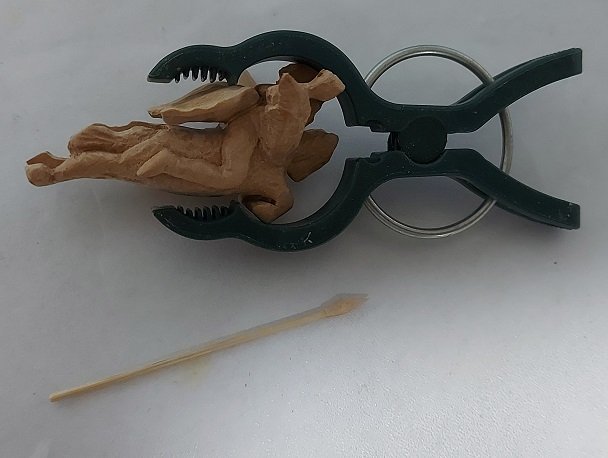
The javelin head is glued to the shaft. I notched the head (a 1/8" diameter dowel) and stepped the shaft into it with glue. When dried I shaped the head with a file and sand paper, having filled the notch with glue so the dust might fill the small notch.
The cloak was shaped and fitted a dozen times and is now glued and clamped.
I also glued the tip of the wing back on.
From a distance it all look darn good to me... though I'm not particularly thrilled with Bellerophon's or the Pegusus' head up close.
Regarding painting most of the figurehead features white... it wasn't until 1814 that the Navy Board approved the use of gilding and colours for figureheads. (source: http://figureheads.ukmcs.org.uk/?p=1715)
-
She has been cut free and is presently being fitted.
Almost there!
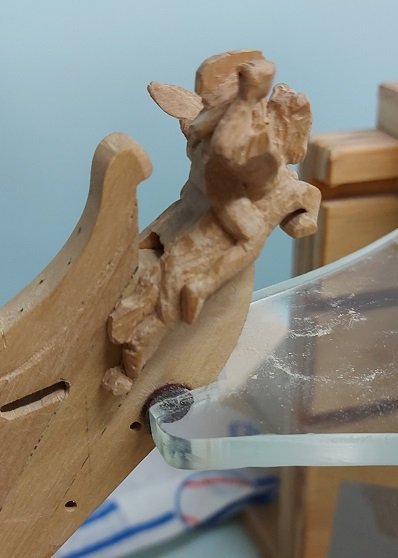
Once I have that done I will do a bit more sanding, add the cloak (because I'll have a better feel of the space left), re-attach the tip of the right wing that broke off, make the javelin (hole already in the hand for it) and paint it.
Then it goes into storage for safe keeping.
RE: Painting. Golden helmet with white plumes, and a red cloak. I understand everything else was simply painted white. Somewhat like the Atlas carving saved from the Captain's stern gallery as seen below.
-
-
-
Took another look at my Iron Bars and decided they are keepers, so I won't be replacing them.
However, I did notice something missing on my mast.... the LUBBERS WOOD!
These are 1-1/2" thick planks installed on top of each Cross Tree and they fit inside the Lubbers Hole in the TOP.
As they will help self centre the TOP onto the TREES when it does get permanently installed I decided to add them today.
- GrandpaPhil, marktiedens, bruce d and 7 others
-
 10
10
-
-
-
I added the iron bars to the outside of the main top for the deadeye shrouds. This are blackened card stock.
I added the swivel gun chocks inboard of the above and drilled the six holes for the swivel gun posts.
I needed to determine the height of the swivel gun chocks. The hidden lines in the drawing tells me the radial top battens pass through it, that it is taller then them. I decided to make them the same height as the gunwale plank below the handrail stanchions.
Below are a few photos. The top is not secured to the trees as a number of blocks need to be added and they might be easier to do with it separated.
So I stow the mast in a rack in a box with dust protection, and the mast top clamped to a piece of wood (keeping it flat and safe) with a guard for the handrail... in a box, and then this in the box with the mast rack. It will be awhile before they are mounted so I need to keep them off to one side.
Now I go back to my last few frames.
-
After considerable research, finding most reference books disagree with each other and some presenting juxtaposed information within themselves, finding only one recent reference to the metal band in the NMM/RMG collection, finding no mention of swivel guns in any Bellerophon newspaper reports of the day, finding several images of different styles of swivel guns for the period in the NMM/RMG collection, finding a reference to an order to stop the practice of arming HM Ships with swivel guns a decade after 1786, and realizing copper would corrode (galvanic reaction) with the iron of the deadeye strap....
I've decided to install the wooden swivel gun chocks and add the blackened iron metal bars along the outsides as one length per side as in my mind the original as launched build would have likely had them whether they were used or not.
Hope to have this done after I've finished the base for my Aleutian Hunting Kayak which I am in the middle of completing. Late last week I completed the base for my Mississippi Plank River Raft as can be seen below.
-
Now I know how I might apply the name on the transom of my build (a few years from now).
Thanks!
- Canute, CDW, Old Collingwood and 3 others
-
 6
6
-
Wish I could offer some advice about stenciling but I suppose that will be one more thing I'm about to learn.
- Canute, Egilman, Old Collingwood and 2 others
-
 5
5
-
The late 1700's saw a lot of changes, like the woolding ropes/hoops being replaced with iron hoops, various developments in the dolphin striker.
Your rudder bolt heads look wonderful... thanks go to John Cairns of our local club for having shared this method with us. Those plastic build guys can do amazing things!
- flyer, Martin W and mort stoll
-
 3
3
-
1 hour ago, Veszett Roka said:
Computers are just blind and dumb devices
Shhhhhh!
They're listening.
- Egilman, Veszett Roka, popeye the sailor and 4 others
-
 3
3
-
 3
3
-
 1
1
-



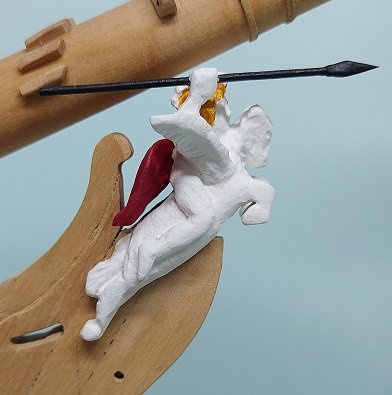
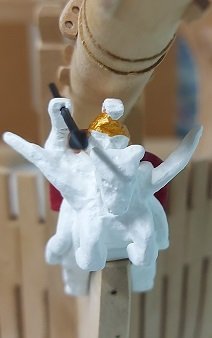
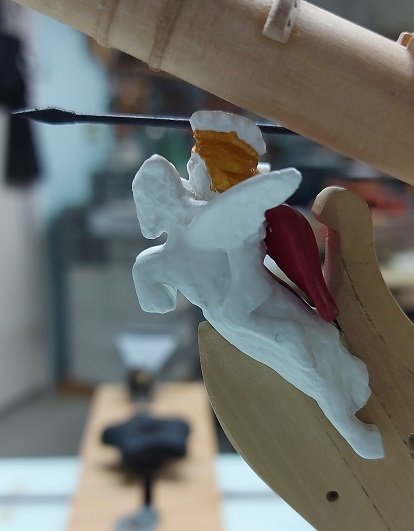
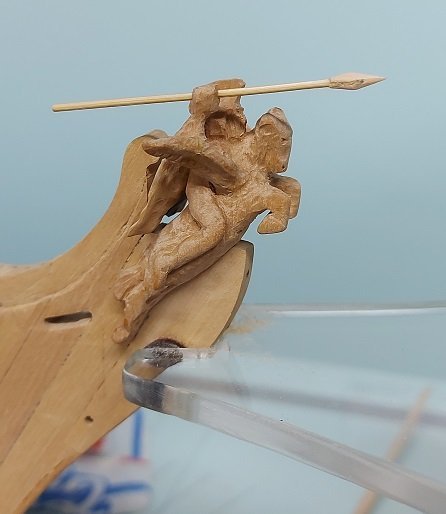
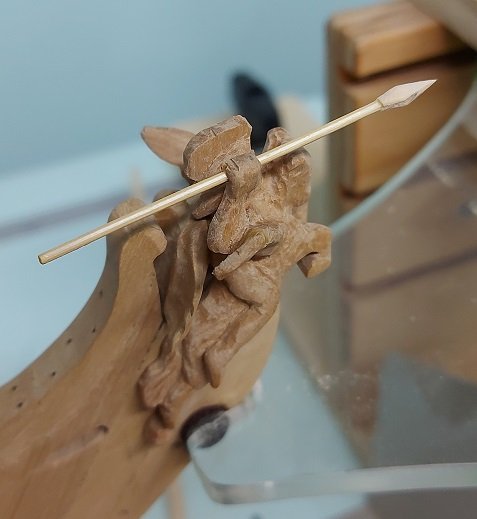
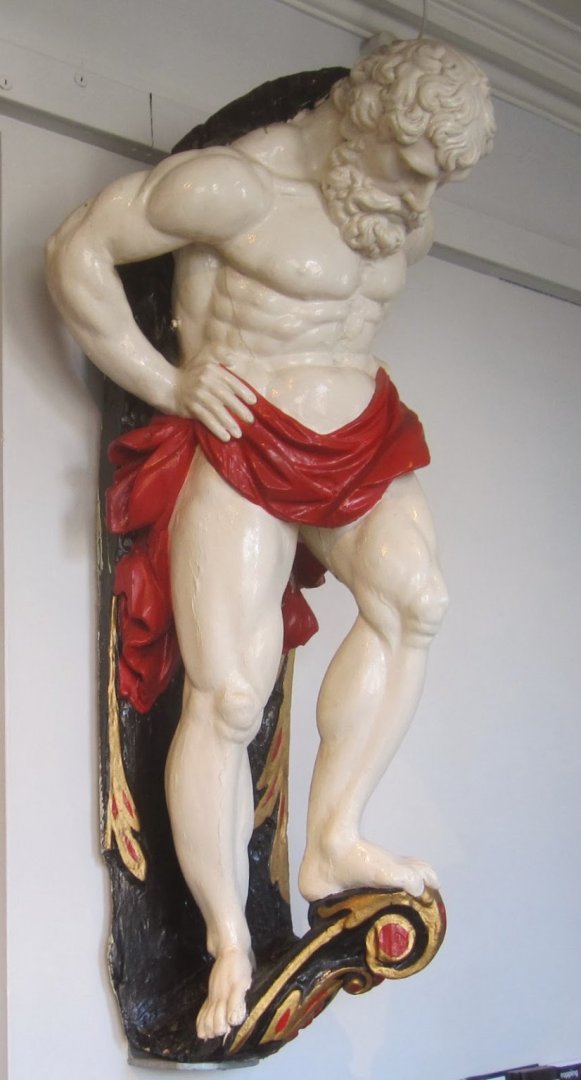
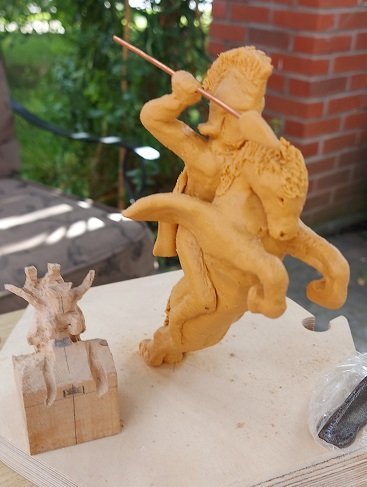
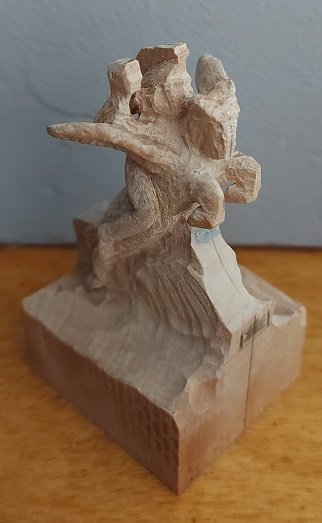
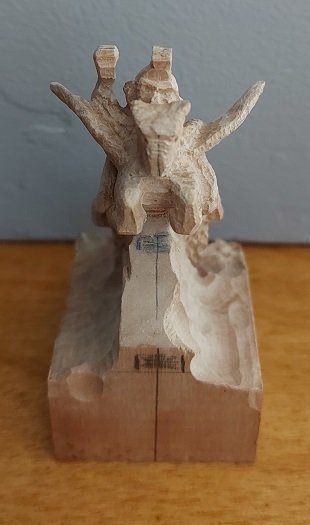
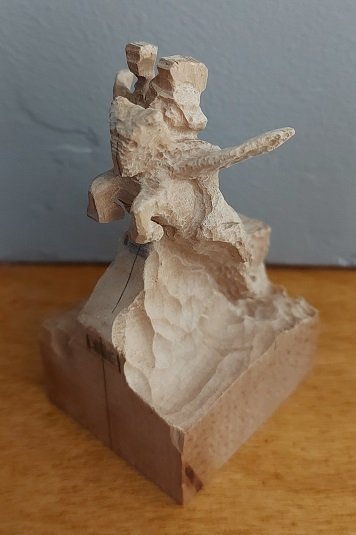
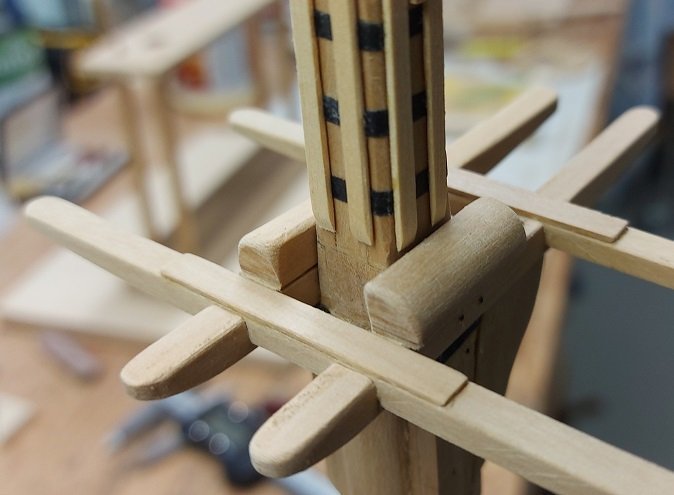
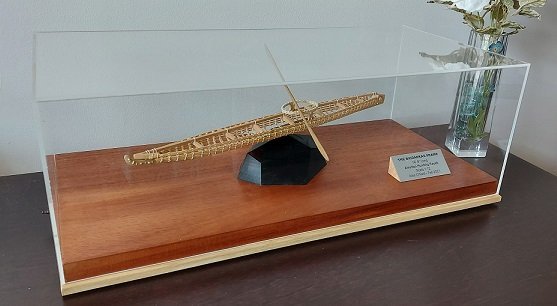
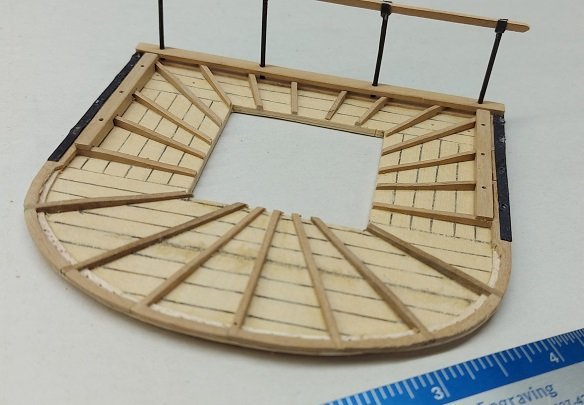
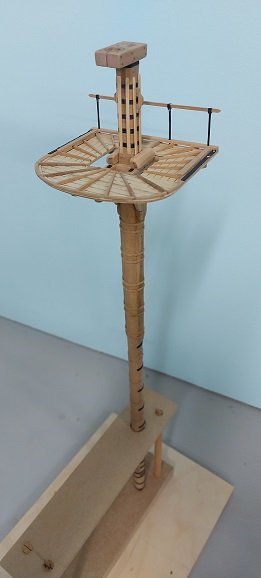
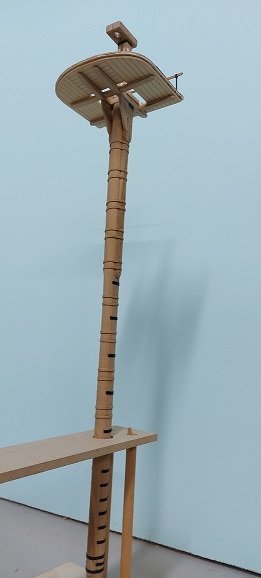
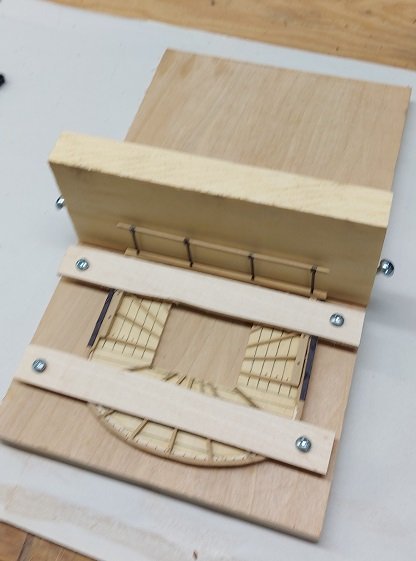
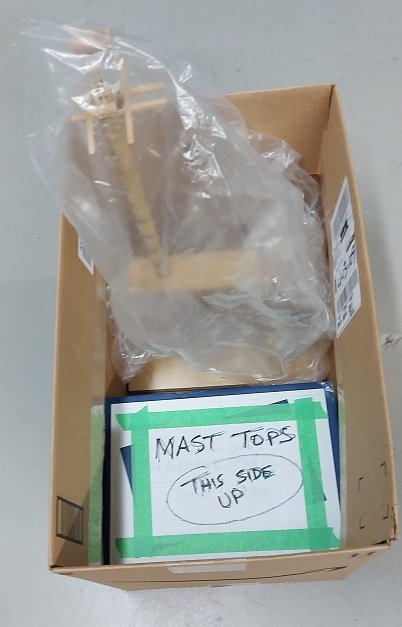
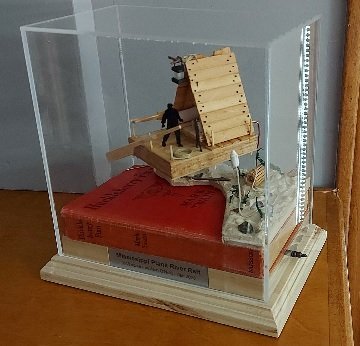
Bluenose by Worldway - Model Shipways - Scale 1:64
in - Kit build logs for subjects built from 1901 - Present Day
Posted
The wood filler and paint will look like a million dollar job!
Can't you just rotate the steering box 180°.